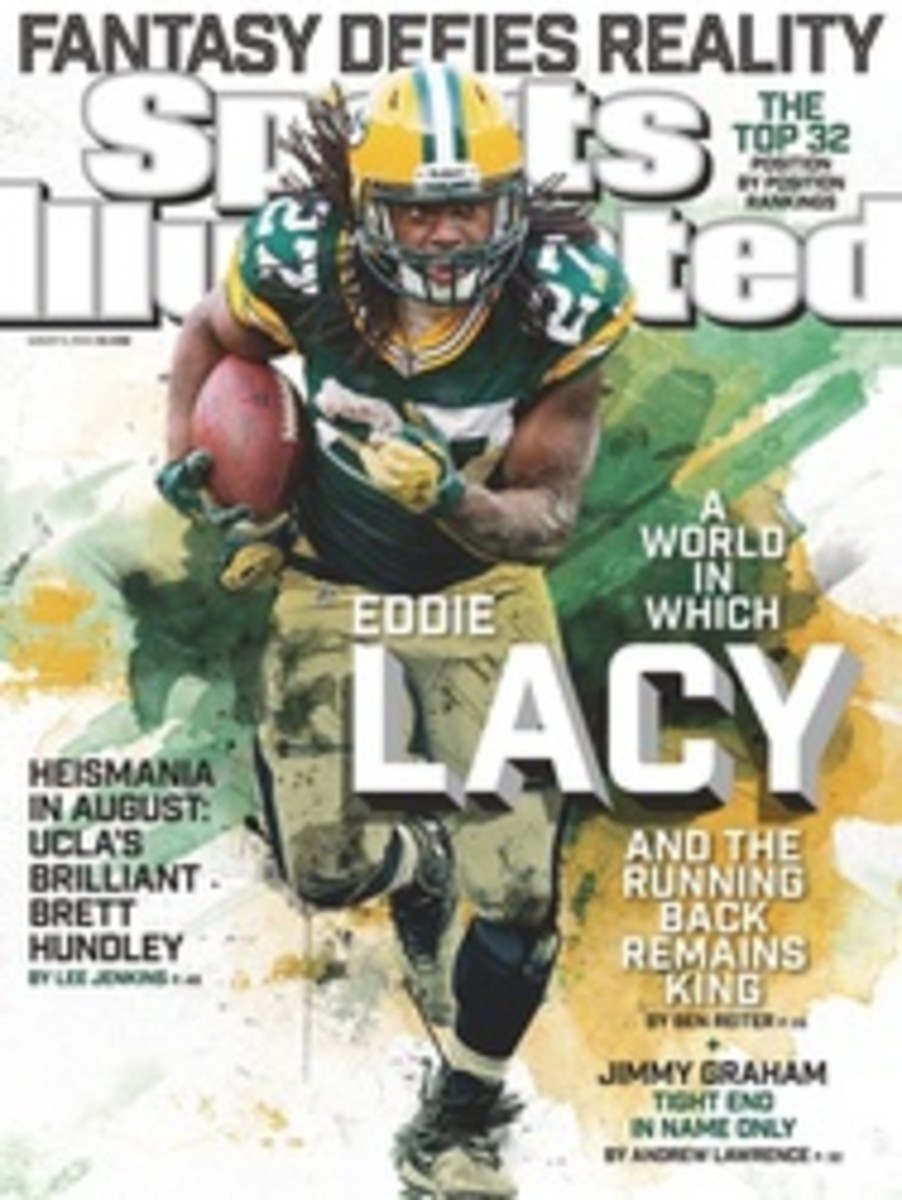
Too Much of A Good Thing?
The NFL's Most Used Back is no longer a title to be proud of—but LeSean McCoy is poised to defy history
It's called the Curse of 370, borne from the days when it was considered nothing special for a running back to reach that many carries. In 2004, Aaron Schatz of Football Outsiders pointed out that a back who was used that often one year was due for a regression the next. Of the 28 times that a player has hit that mark, 20 missed at least one game the following year, though the injury rate was generally higher.
NFL teams—whether they'll admit it or not—have taken heed. The last man to tempt the curse, Michael Turner, toted the rock 376 times for the Falcons in 2008—and he missed five games in '09. Turner led the NFL in carries again the following year, with 334, and was out of the league two years later, at 31. Since 2011 the Seahawks' Marshawn Lynch leads the NFL in carries, with 334 per season, counting the playoffs. (Seven players had that many in '04.) Lynch is now 28, and Seattle is already talking about a backfield committee.
Rather than rely on a bellwether back, teams are expanding their offensive structures. The frequency of formations with three or more receivers has increased from 49% to 56% since 2011. Now more than ever, backs have to be versatile to remain relevant (and desired). Take the Eagles' LeSean McCoy, who anyone holding a top five fantasy pick in '14 has to consider drafting. The '13 rushing champ (1,607 yards) thrived in coach Chip Kelly's wide-open offense, and McCoy did so because of his diverse skills. He paced the league with 314 carries—the lowest leading total in 24 years—but he also caught 52 passes, adding to his overall value.
After that high-volume year, McCoy is looking to do something that so many bigger and stronger backs have failed to do: survive. And he has help. The Curse of 370 is precisely the type of thing that Kelly has been addressing with advanced player-tracking methods since he was Oregon's coach. Today he uses heart monitors, customized devices that measure a player's readiness for training and competition, and also a 3-D technology that measures workout efficiency—gear that has cost the Eagles more than $1 million.
McCoy, 26, is completely on board. "Going into my sixth season, it's very important, the way you take care of your body and the way you play," he says. "You get to a level where you feel like, I go out there and I play hard and I put my all into it—but it's really more than that. Now we can monitor everything: how hard we're practicing, the things we put in our bodies."
Once he steps onto the field, preservation falls on McCoy's shoulders, and here he follows the lead of the one back who was able to consistently beat the curse. Pundits used to bash Eric Dickerson for running out-of-bounds, but with the Rams and the Colts in the 1980s he topped 370 carries four times; in the seasons after those four he averaged 317 carries for 1,485 yards, and he played until he was 33. McCoy is not afraid of contact—for a 5' 10", 215-pound back he runs inside a lot—but he also understands the importance of avoiding hits when possible.
The nature of Kelly's offense further helps McCoy's cause: The Eagles play at a furious pace, wearing defenses down, and Philly's spread formations force foes to cover the entire field, pitting the running back against smaller gangs of tacklers. In the past McCoy has missed games for an array of injuries: a sprained ankle, a concussion.... Now, he says, "I don't see a lot of direct shots. I don't see a lot of wear and tear, a lot of hits. The small things like that have really helped me out so that I can have a long career."
Prolonging his NFL tour is something McCoy has been thinking about for a while now. Even before Kelly arrived, McCoy started working during his off-seasons with Los Angeles trainer Travelle Gaines, who manipulates the running back into the very positions you think he'd want to avoid. "LeSean is obviously cutting—stopping and starting—off one leg a lot, so I put together exercises that put him in those situations," says Gaines, referring to cutting drills amplified by weight vests and medicine balls. "When he's playing, he's felt that so many times, it's not shocking his body."
But if McCoy does it right, he hopes you'll see even fewer of those trademark cuts—the ones that earned him the nickname Shady—in the future: "I'm learning I don't have to do [that fancy stuff] all the time. Sometimes defenders are nervous to approach me because they see that on tape. So now it's more like, Just run. Make them catch me instead. If I run past them, I don't have to worry about making anyone miss."
In the ongoing struggle to remain fantasy relevant, McCoy is on the right track to outrun the curse.
SI.COM
Feel the sweat! Get inside the workout room with LeSean McCoy and a handful of NFL veterans at SI.com/LeSean
PHOTO
DREW HALLOWELL/PHILADELPHIA EAGLES/GETTY IMAGES

